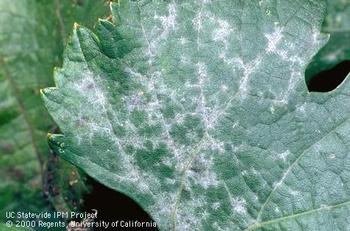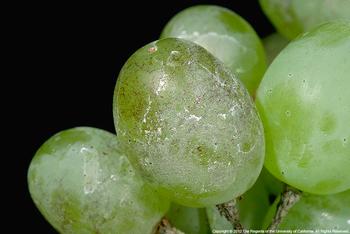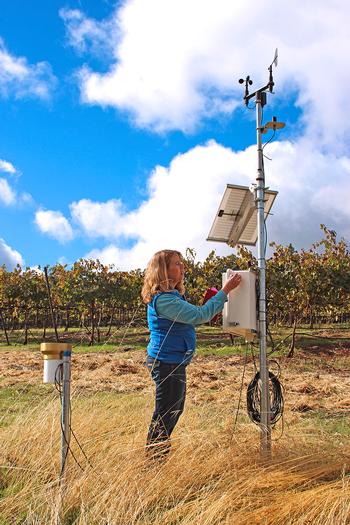Powdery mildew (Erisiphe necator)
Powdery mildew is a serious disease of wine grapes that all grape growers need to treat for. Successful mildew control depends on:
- TIMING of treatments. Almost all fungicides, with the exception of JMS Stylet Oil, are protectants and therefore need to be on the vine prior to mildew spores landing in order to protect from infection.
- CHOICE of fungicide materials and understanding their mode of action and class. Some materials are very effective when mildew infection "pressure" is light (i.e., when weather conditions are less conducive to mildew development) but breakdown under high pressure (i.e., when weather conditions are highly favorable for mildew development and mildew inoculum is abundant). Consult the "Efficacy and timing of fungicides..." link below to see which fungicides are most effective. Be sure to rotate class of fungicide used to prevent the mildew fungus from developing resistance to fungicides.
- COVERAGE. Good spray coverage is essential for mildew control and requires sprayer calibration, adequate volume/acre, and canopy management.
Useful links for powdery mildew information:
UC IPM pest management guidelines for powdery mildew
Grape cultivar susceptibility list (Vasquez), PDF
See the Fungicides, Bactericides, and Biologicals for Deciduous Tree Fruit, Nut, Strawberry, and Vine Crops 2017 for the efficacy and timing of fungicides, bactericides, and biologicals for deciduous tree fruit, nut, strawberry and vine crops.
Go to the Powdery mildew monitoring stations webpage.



